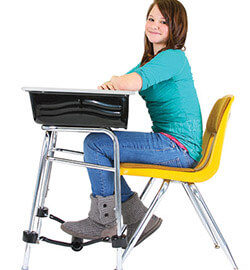Allyson Locke M.S., OTR/L
In this post we take a dive into flexible seating options that are available for classroom and home learning environments.
First, What Does Flexible Seating Mean?
Sometimes called alternative seating, flexible seating is simply a seating option that is different from ‘traditional’ seating arrangements and is often used to address a sensory need. Traditional seating arrangements may be things like the desk chair students use in a classroom, the dining room chair at the eating table or the office chair at a work desk. Flexible seating arrangements may be a therapy ball in place of an office chair or it may be a beanbag in place of the traditional student desk setup. Read on to learn more!

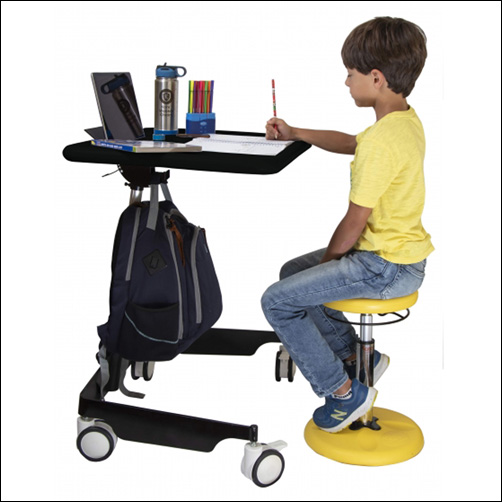
Next, Understand the Importance of Flexible Seating Options in Learning Environments.
Having a variety of seating options helps to ensure all learners have a setup that is most effective for their learning style. Some options may help to address underlying sensory needs while other options provide the movement that has been shown to be preferred by students when learning (Cole et al., 2021, 72). Having just the right seating arrangement can make the difference between a successful learning experience and one that is full of distractions, position changes, and learning sessions that don’t last as long as they should.
Finally, Pick the Right Seating Options.
Understanding the need (or needs) you are trying to address will help you determine the best seating option(s).
For the wigglers, movers, and bouncers who just need a little extra sensory input to focus and sustain attention, try a seating option that provides movement (vestibular) or light touch (tactile) input. A seating option that provides tactile or vestibular input will help the sensory system that is seeking movement, get it in a way that is more conducive to learning and working.
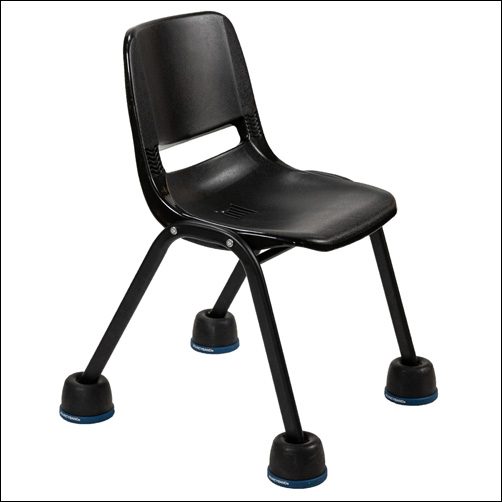
Wobble Feet: These are simply four, rubber domed shape ‘feet’ that slip onto a standard chair leg. The Wobble Feet provides a subtle rocking and a soft bounce feel. These are especially popular for users who are looking for a “low profile” option; they can be slipped onto a regular classroom chair and are small enough that they are not very noticeable in the sea of classroom chairs.
Sensory Spots: Spot Sensory Seats and Senso Seat Pads are flat pads that have a textured side. This textured side provides subtle sensory input without much challenge to postural stability. They can be used in just about any seating situation and can easily roll up when moving seats.
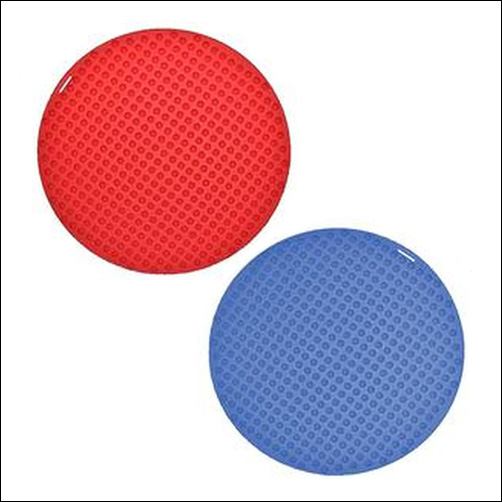
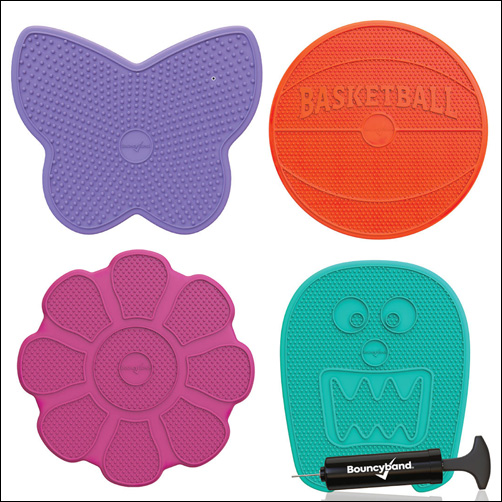
Cushions: Air filled or foam cushions can be added to just about any chair, bench or even used on the floor. They are usually round or wedge shaped but newer versions now offer fun shapes like monsters or flowers. The amount of air, that can be added, to the air filled cushions is typically adjustable allowing for users to increase or decrease the amount of movement offered. Cushions are generally portable making them a great option for those who change work areas throughout the day. For even more convenience options with handles are now available!
Wobble Stools: The Kore Wobble Chair offers a seating option much like sitting on a stool with the exception of the innovative rounded bottom that allows the user to rock in all directions. In addition to the rocking movement the stool shape allows more freedom to move the legs in different positions.
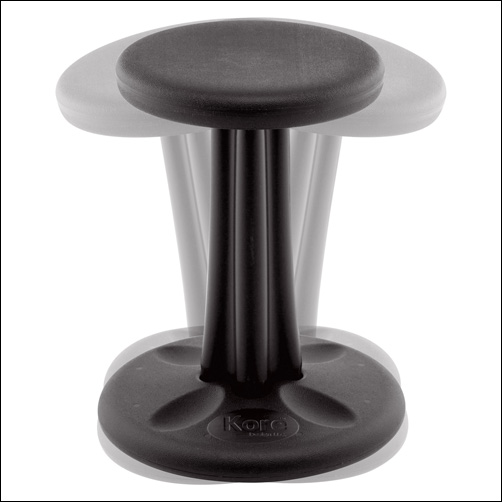
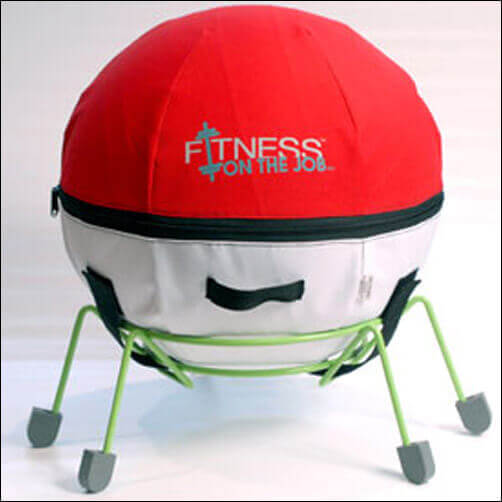
Ball Chairs: Ball chairs come in all shapes and sizes. At the most basic level a large therapy ball is used in place of a chair. This is a great option for users who need a lot of input but therapy balls are unstable and can be difficult for users with poor postural control. A base can be added under the ball to help prevent the ball from moving out of position. Another option is to use a peanut or egg shaped ball; these balls have an elongated shape that increases stability for the user. The Alert Seat puts the traditional therapy ball on a wheeled base allowing for more mobility. The Ball Chair Deluxe takes the shape of a traditional office chair but replaces the seat with a large inflated ball.
For the fidgeters, hair twirlers and those with a little extra nervous energy try a seating option that provides deep pressure input or gives the big muscles a chance to work. This type of input can help calm an anxious or overstimulated sensory system. Try:
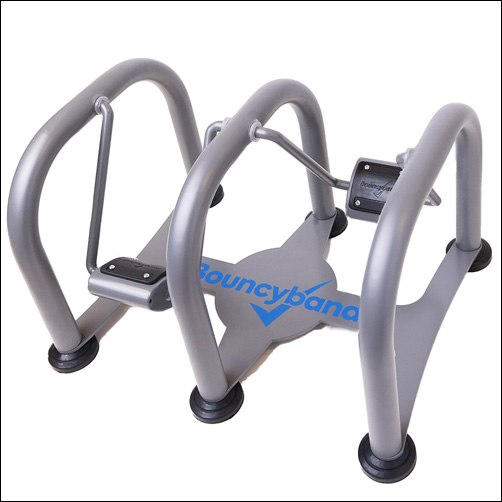
Body fidgets. Unlike smaller, handheld fidgets, body fidgets allow other parts of the body to interact with the fidget leaving the hands free for work. Foot fidgets can be attached to chair or desk legs, allowing users to kick, push and pull the heavy elastic bands with their feet. For users who frequently change work spaces portable foot fidgets are available; these can be placed under the workspace and interacted with in the same manner. The footroller is a unique body fidget; fidgeters place their foot on the roller, spinning it forward, backward or both ways. Another unique option is the Foot Swing; the foot swing allows for a silent swinging motion of both feet, independent of each other.
Weight. Adding weight to the lap or shoulders is a great way to center, orient and calm an over responsive or anxious system. An added bonus, many offer textured covers for additional tactile input.
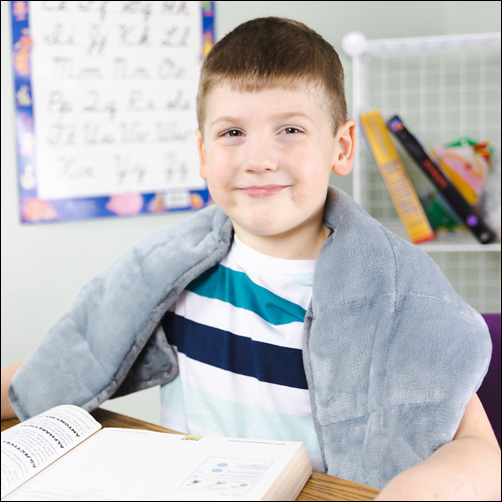
For those who just need a change of scenery, setting up an alternative work spot is a great way to refocus. Some options include:
- Standing at a counter height work space or taping work to a wall are options to allow for standing positions while working. To add a little dynamic movement try standing on a foam wedge or air cushion.
- Laying Down. Working while laying on the stomach is a great way to provide proprioceptive input through the shoulders joints (perfect for those needing calming and organizing input). This position also gives students who are struggling with postural instability to get more support so they can focus on their work and not on staying stable! Use yoga mats or cushions to provide comfort and a clipboard or slant board as a work surface.
- Get Cozy. Another option for a position change is sitting in a bean bag, Howda Designz Chairs or the Comfy Cozy Peapod Chair. While not the best option for all types of tasks these options are great when the activity involves reading or listening. The deep pressure input provides calming and organizing input.
Having a variety of seating options available in any learning space is a sure way to increase focus and attention. Identifying options that are appropriate for the user and the environment are keys for successful implementation.
Reference:
Cole, K., Schroeder, K., Bataineh, M., & Bataineh, A. (2021, April). Flexible Seating Impact on Classroom Environment. The Turkish Online Journal of Educational Technology, 20(2), 62-74.

